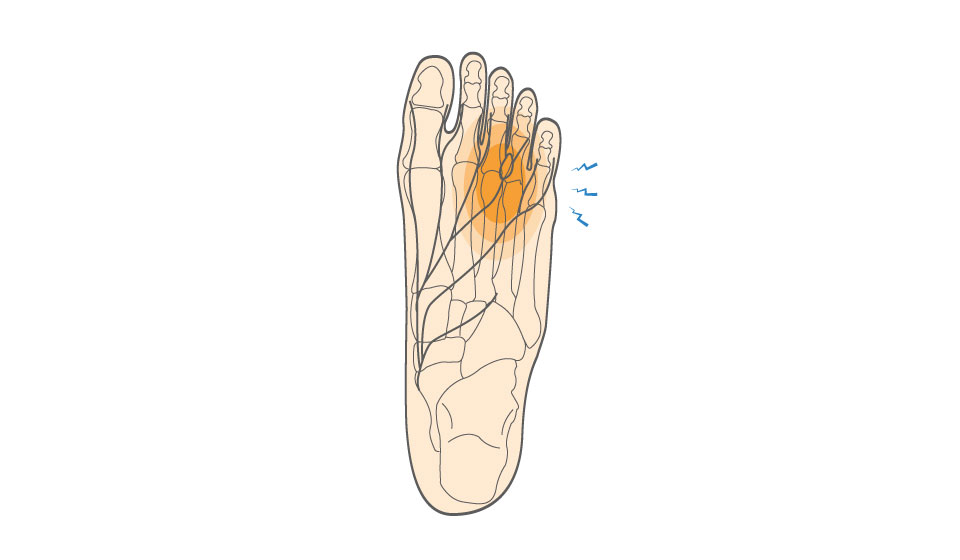Morton’s neuroma, also called interdigital neuritis, is characterized by sharp pain in the ball of the foot that is often worse when wearing tight footwear. A neuroma is a benign growth on a nerve. In the foot, a neuroma develops when the tissue surrounding one of the nerves that leads to the toes becomes thick. This oftentimes creates a sensation when standing and/or walking that you are walking on a marble or a pebble. Ninety percent of cases of Morton’s neuroma occur between the third and fourth toes.
Morton’s Neuroma Causes, Symptoms & Treatment Options
Morton’s neuroma, also called interdigital neuritis, is characterized by sharp pain in the ball of the foot that is often worse when wearing tight footwear. A neuroma is a benign growth on a nerve. In the foot, a neuroma develops when the tissue surrounding one of the nerves that leads to the toes becomes thick. This oftentimes creates a sensation when standing and/or walking that you are walking on a marble or a pebble. Ninety percent of cases of Morton’s neuroma occur between the third and fourth toes
Overview
Overview

What causes Morton’s Neuroma?
Morton’s neuroma develops as a result of continuous irritation and pressure to one of the nerves leading to the toes that can occur due to:
• Continuous use of tight footwear, specifically shoes with a narrow toe box
• Repetitive dorsiflexion (upward flexion) of the toes, a movement common in running
Morton’s Neuroma is most common in these sports:
• Running
• Skiing
• Snowboarding
• Dance
Symptoms
Symptoms associated with Morton’s neuroma typically include:
• Sharp pain in the ball of the foot that worsens when wearing tight shoes
• Feeling as if you’re standing on a pebble or a marble
• Numbness and tingling in the affected toes
When to see a doctor
If you notice a burning pain in the ball of your foot that does not resolve within a few days, make an appointment to see an orthopedic specialist, as this could be a sign of Morton’s neuroma. During your appointment, your doctor will ask you to describe your symptoms and will examine your foot for signs of Morton’s neuroma, such as tenderness in between the toes, pain when pressing on the forefoot, or clicking felt when performing the Mulder’s test (holding your foot by the sides and performing a squeeze).
In order to make a diagnosis, your doctor may order an x-ray to rule out any fractures. He/she may also perform an ultrasound scan to identify the neuroma.
Non-operative treatment
Treating Morton’s neuroma will be approached differently depending on the severity of your symptoms. Typically, treatment is started using conservative, non-operative methods that include:
• Using shoes with a wider toe box
• Inserting soft insoles with an offloading pad that relieves pressure on the toes
• Corticosteroid injections administered by your orthopedic specialist to relieve pain and inflammation
Try these exercises to help address your condition:
Below is a PDF of the Exercise Program
Surgical Treatment
If conservative treatment methods fail to relieve symptoms, surgical excision of the neuroma may be recommended. Surgery typically provides excellent results and relief of symptoms, with a relatively short recovery time.
Recovery
Following surgery, the athlete’s foot is usually protected with a special shoe. Athletes get the go-ahead for normal activities and play once they have regained range of motion and strength and are free of pain.

